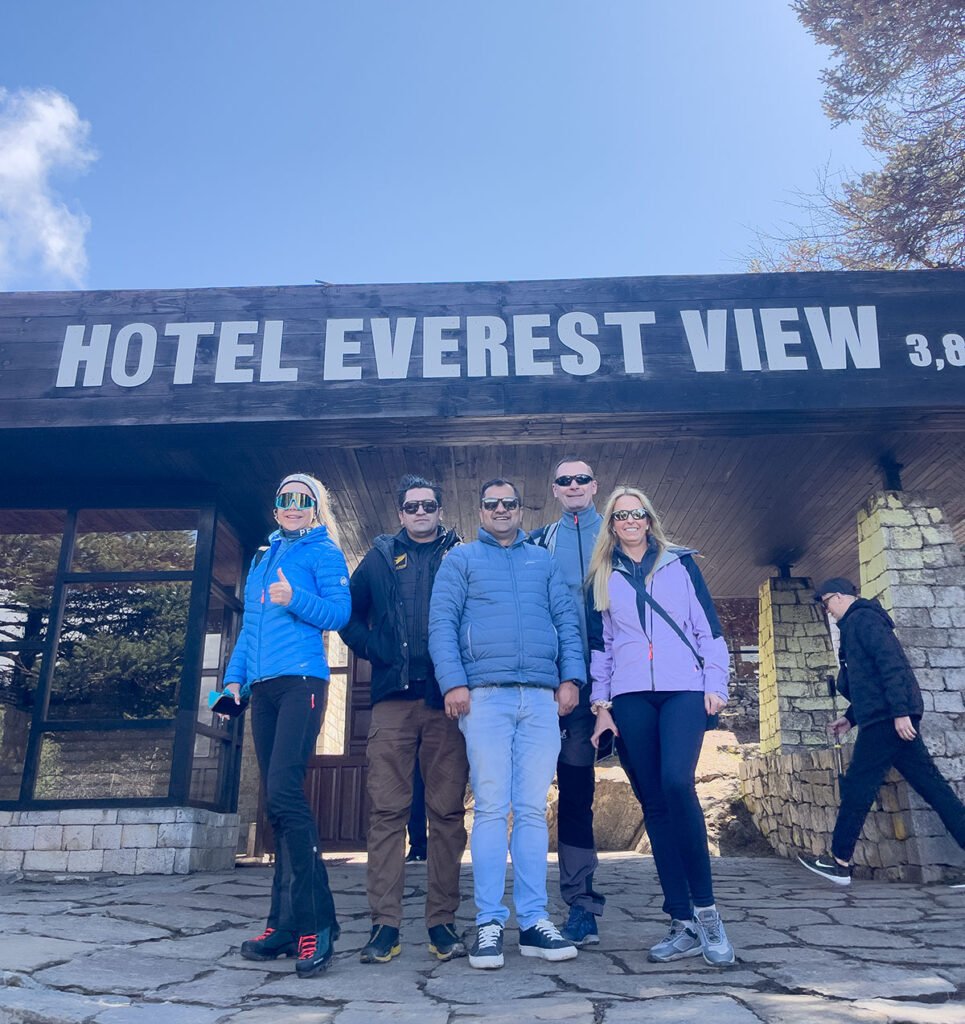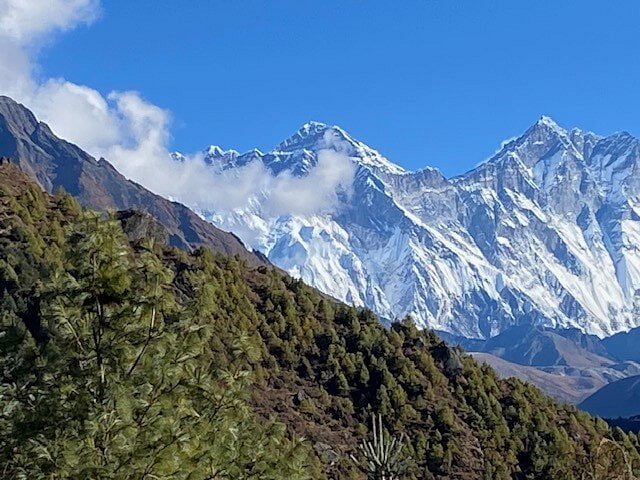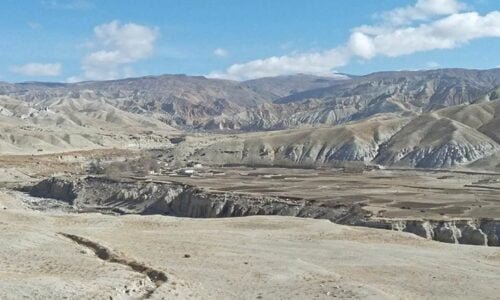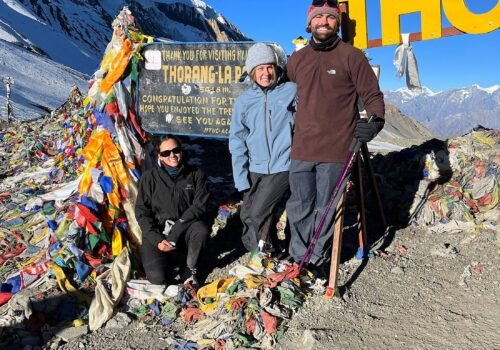A Complete Guide to Everest Base Camp Trek via Salleri
23 Jun 2025 8 min to read

Outdoor Himalayan presents ‘A Complete Guide to Everest Base Camp Trek via Salleri’ for easy and effective planning. Salleri is an alternative trek route to the Everest Base Camp seeking for road journey. It is suitable for travelers on budget as well those who have adequate time to explore.
The Everest Trek via Salleri is a full roadway trek offering a memorable experience to the travelers. The trek starts from lower elevation which helps trekkers to adapt to the surrounding. Admiring the natural beauty of the Salleri region, explore the region’s pristine beauty and diverse landscapes. Get a new experience of trekking to the Everest Base Camp following the different route.
Why Choose the Everest Base Camp Trek via Salleri?
Well-paved road journey: The journey from Kathmandu to Salleri offers a smooth ride, with most of the route being well-paved, ensuring comfort for trekkers before they begin their adventure.
Pristine beauty of the region: Trekkers can enjoy a variety of breathtaking landscapes, from lush green hills and terraced fields to serene rivers, charming villages, and majestic snow-capped mountains.
Adequate time for acclimatization: Starting at a lower altitude allows trekkers to gradually acclimatize to the increasing height. It minimizes the risk of altitude sickness.
Budget friendly and new experience: This trek provides an affordable option for budget-conscious travelers while also offering challenging terrain and stunning vistas for experienced trekkers.
Everest Base Camp and Kalapatthar viewpoint: Reaching Everest Base Camp at 5364 m offers a life-changing experience at 5,364 meters, while the Kalapatthar viewpoint at 5,644.5 meters offers the best panoramic views of the surrounding peaks.
Impressive views of snowy mountains: The trek provides awe-inspiring views of some of the world’s most iconic peaks, including Everest, Lhotse, Nuptse, Ama Dablam, and Kantega.
Sherpa locals, lifestyle, and culture: The route offers a rich cultural experience, allowing trekkers to learn about the Sherpa people’s traditions, lifestyle, and their deep connection to the mountains.
Numerous monasteries, lamaseries, and temples: Along the trek, trekkers pass by sacred Buddhist sites such as the Tengboche Monastery, where they can witness the serene spiritual atmosphere of the region.
Key Information at a Glance
Maximum Elevation: 5644.5m (Kalapatthar)
Physical Grading: Moderate
Best Seasons: Spring (March-May) & Autumn (September-November)
Accommodation: Basic teahouses along the trail
Meals: Full board during the trek (healthy, hygienic meals)
Permits Required: Sagarmatha National Park, Khumbu Pasang Lhamu Rural Municipality, and Trekkers Information Management System (TIMS)
Trek Route:
Paiya – Phakding – Namche Bazaar – Tengboche – Dingboche – Lobuche – Gorakshep – Everest Base Camp – Gorakshep – Kalapatthar –Pheriche – Namche Bazaar – Lukla – Khari Khola – Salleri
Also Read: Complete Guide to the Gokyo Ri Trek

Day-to-Day Short Overview
Day 01: Arrive in Kathmandu (1400 m)
Arrive in Kathmandu, get welcomed by the representative, and transfer to the hotel.
Day 02: Trek preparation day
Documentation works (Issue of Permits, Paper works), (Optional: Sightseeing in UNESCO World Heritage sites in Kathmandu).
Day 03: Kathmandu to Salleri Drive (2362 m) (private or sharing jeep)
An 8-9-hour drive admiring the scenic beauty of the surroundings.
Day 04: Local jeep ride to Khari Khola (2020 m), trek to Paiya (2730 m)
An exciting 4-hour local jeep ride to Khari Khola and trek to Paiya with a guide and porters.
Day 05: Trek to Phakding (2610 m)
Walk on a comfortable plain trail to arrive at Phakding.
Day 06: Trek to Namche Bazaar (3440 m)
Trek to the vibrant Sherpa capital Namche Bazaar which is the gateway to the Everest Base Camp.
Day 07: Acclimatization day in Namche
Spend the first acclimatization day hiking to the Everest View Hotel or Khumjung Village (3,790 m) tour.
Day 08: Trek to Tengboche (3867 m)
Trek to Tengboche which is home to the largest Tengboche Monastery in the Everest region.
Day 09: Trek to Dingboche (4410 m)
Trek to only barley-grown place Dingboche where you experience an increase in altitude, so trek slowly.
Day 10: Acclimatization Day in Dingboche
Spend the second acclimatization day hiking to the grand Nangsar Tshang Peak (5,083 m) or the beautiful Chhukung Valley.
Day 11: Trek to Lobuche (4940 m)
Trek pass Khumbu Glacier moraine to reach Lobuche.
Day 12: Trek to Gorakshep (5164 m), trek to Everest Base Camp (5364 m) & back to Gorakshep
Adventurous trek to reach the iconic Everest Base Camp and return.
Day 13: Trek to Kalapatthar (5644.5 m) via Gorakshep, and trek back to Pheriche (4371 m)
Trek to the vantage point Kalapatthar for a close-up of Everest and other peaks views, and return to Pheriche.
Day 14: Trek to Tengboche (3867 m)
Return to Tengboche which takes about 5 hours.
Day 15: Trek to Monjo (2835 m)
Return to Monjo which takes about 6-7 hours.
Day 16: Trek to Lukla (2610 m)
Return to Lukla takes about 2-3 hours.
Day 17: Trek down to Khari Khola (2020 m)
Return to Khari Khola takes about 4-5 hours.
Day 18: Drive to Salleri (2362 m)
Scenic drive to Salleri.
Day 19: Drive to Kathmandu (1400 m)
Return to Kathmandu takes about 8-9 hours.
Day 20: Final Departure
Transfer to the airport for your departure.
Suggested: Luxury Everest Base Camp Trek

Accommodation and Meals
Teahouses are accommodation means with basic but comfortable services, including healthy and hygienic meals. Food options include local Nepali dishes along with Indian and continental. The washrooms are mostly outside the teahouse as the elevation rises. There are options of boiled water or Mineral water bottles costing USD 1-2 for drinking.
Preparation and Fitness
The Everest Base Camp trek via Salleri is longer than the usual Base Camp trek. The trekking trails are rough, consisting of several ascents and descents. Hence, the trek is demanding and requires trekkers to be both physically and mentally fit. The trek is moderate, but trekkers must have a good fitness level to walk daily for long hours. To prepare for the trek, we suggest participating in exercises focusing on hiking and endurance. Also, maintain good health and consume healthy foods. Previous trek experience is a bonus. We highly suggest taking acclimatization rest and following the trek guidelines as scheduled.
Gear and Packing List
Warm clothing: Insulating layers, down jackets, trekking pants, thermals
Trekking boots: Durable, waterproof boots
Sleeping bag: Suitable for temperatures as low as (-10°C)
Accessories: Sunglasses, sunscreen, hats, trekking poles, headlamps, and a water purification system
Permits and Fees
The Everest Base Camp trek via Salleri requires three compulsory permits.
Khumbu Rural Municipality Permit
Foreigners- NPR 3000
SAARC- NPR 2000
Sagarmatha National Park (SNP)
Foreigners- NPR 3000
SAARC- NPR 1500
Trekkers Information Management System (TIMS)
Foreigners- NPR 2000/person
SAARC- NPR 1000/person
Diplomats/Foreign Officials & their families- NPR 500/person
Best Seasons to Trek
Autumn (September to November) and Spring (March to May) are the best seasons for the Everest Base Camp trek via Salleri. Favorable weather, moderate temperatures, blossoming seasonal flowers in Spring, comfortable walking trails, and vibrant scenery make these seasons ideal for trekking.
Winter (December to February) and Monsoon (June to August) seasons are generally not recommended for trekking. The unpredictable weather and slippery trails with unclear views make trekking in these seasons unpleasant. However, with proper planning and preparation, it is possible to trek in the Winter and Monsoon.
Also Read: Top Spring Treks in Nepal
Conclusion
The Everest Base Camp Trek via Salleri offers a vast experience, taking you through diverse landscapes and an absurd ecological and environmental diversity. Immersing in the local Sherpa culture and lifestyle, visiting Buddhist Monasteries, and walking in the vicinity of the snow-covered highest peaks, and the unspoiled beauty of the region make this trek a memorable one. A Complete Guide to Everest Base Camp Trek via Salleri is designed for the right planning and preparation, and we ensure it will prove beneficial.
Everest Base Camp Trek via Salleri Frequently Asked Questions
How long is the Everest Base Camp Trek via Salleri?
The Everest Base Camp trek via Salleri takes around 18 to 20 days to complete.
Do I need a guide for the Everest Base Camp Trek via Salleri?
A licensed guide is mandatory, and it is highly recommended for the Everest Base Camp Trek via Salleri.
Can I do the Everest Base Camp Trek via Salleri independently?
Independent Everest Base Camp Trek via Salleri is strictly prohibited.
Are there any age restrictions for the Everest Base Camp Trek via Salleri?
There are no age restrictions, but we still recommend parental guidance for children below 16.
Are there any alternative routes or side trips on the Everest Base Camp Trek via Salleri?
Some popular side trips on the Everest Base Camp Trek via Salleri are Khumjung Village and Buddhist Monasteries.
Are there ATM facilities available along the Everest Base Camp Trek via Salleri?
There are ATM facilities at Namche Bazaar on the Everest Base Camp Trek via Salleri route. We highly suggest carrying enough cash (in Nepalese rupees) to cover your expenses throughout the trek.
Are there any communication facilities available during the Everest Base Camp Trek via Salleri?
There are limited communication facilities, such as mobile network coverage and Wi-Fi, along the Everest Base Camp Trek via Salleri.
Can I extend or customize the Everest Base Camp Trek via Salleri?
Yes, the Everest Base Camp Trek via Salleri can be extended or customized, and consult with a trekking agency for it.





